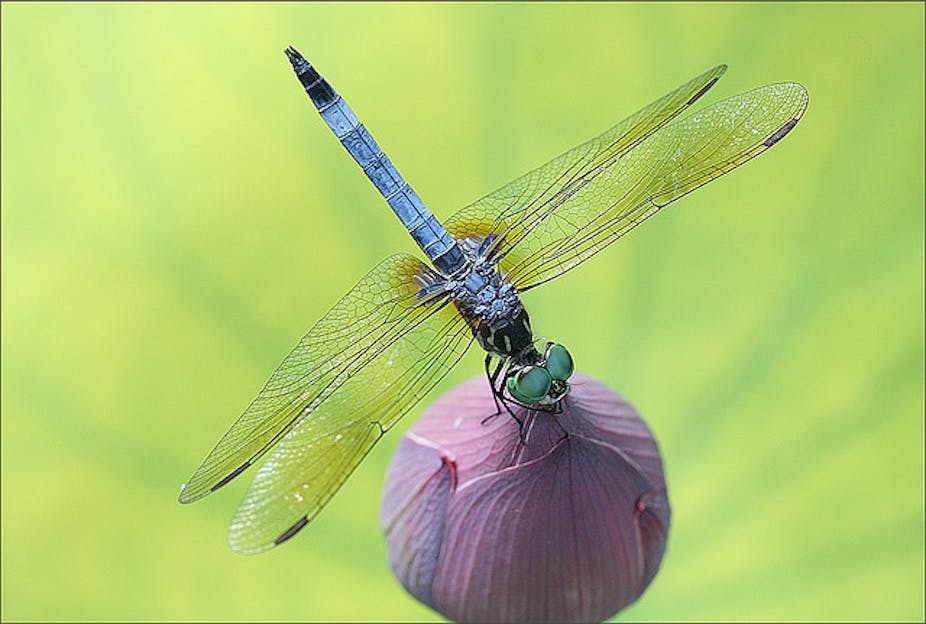Pesticide levels considered environmentally friendly in Europe and Australia are, in fact, having a devastating effect on invertebrate insect biodiversity in nearby creeks and streams, a new study has found, showing the need for an urgent overhaul of the way pesticide risk is assessed.
Water-dwelling invertebrates like worms, snails, crustaceans, mites and insects play a crucial role in regional ecosystems because they provide food for fish, birds and platypuses.
The study, published in Proceedings of the National Academy of Sciences (PNAS), found that invertebrate biodiversity, mostly insects, was slashed by up to 42% in the streams studied.
The international research team, which included scientists from the University of Technology, Sydney, examined data on levels of pesticide toxicity in 48 and 24 sampling sites in Europe and Southern Victoria respectively.
The researchers selected creaks and streams that were close to crops of grape vines, orchards, berries, vegetables, corn, sugar beet or oil-seed.
The sites selected had no wastewater treatment plants, industrial facilities, or mining drainage upstream, allowing the researchers to rule out the possibility that pollution was from non-agricultural sources.
“Current use pesticides in southern Victoria and regions in Germany and France is reducing the number of different types of animals without backbones, or invertebrates, living in streams and rivers. The animals most affected were mayflies, stoneflies, caddisflies and dragon flies,” said ecotoxicologist and aquatic ecologist from the University of Technoligy, Sydney, Dr Ben Kefford, who co-authored the paper.
“Importantly, the reduction in the number of different types of invertebrates occurred at the regional scale.”
Pesticide regulation
The findings also show that pesticide regulation in Australia and Europe may be flawed. Pesticide regulation is intended to prevent threats to biodiversity or collateral elimination of insects that are not pests.
“The regulation in both these continents is probably failing because they are both based on determining the effect of pesticides in the laboratory […] without studying the effects pesticides have in real streams and rivers,” Dr Kefford said.
Dr Jon Brodie, Senior Principal Research Officer at James Cook University, who was not involved in the study, said the findings did not surprise him.
“We already know the current pesticide regulatory regime in Australia, at least, is not up to the mark for protecting aquatic biodiversity.”
Dr Brodie said that the results highlight a need for better pesticide use evaluation.
“The results could be used to show the inadequacy of the current protection regime and to improve it by doing more sophisticated analysis and addressing the cumulative nature of pesticide exposure,” he said.
Crop protection
Dr Richard Roush, Dean of Melbourne School of Land and Environment at the University of Melbourne, said the new findings were unsurprising.
“I don’t think this paper makes a particularly strong case that the risk assessment needs to be across regional scales. To be used in practice, the new standards and methods in risk assessment do need to measure risk at biologically relevant concentrations and identify the specific pesticides that need to be better regulated, which are likely to be the insecticides rather than some of the other pesticides listed,” said Dr Roush, who was not involved in the study.
“Before this is somewhat underway, the immediate implications for aquatic biodiversity are limited, because there is still huge demand for crop protection.”
However, Dr Kefford, who co-authored the paper, said that while pesticides were often regulated at a national level, the risk is mostly assessed by its effect on individual organisms rather than on real ecosystems.
“Indeed, if pesticides kills some aquatic invertebrates it is not a major environmental problem but it is if it reduces biodiversity across a region,” he said.
“What is undeniable is the need for regulation to consider the effects of pesticides in real ecosystems and not be confined to effects in the laboratory and semi-natural ecosystems.”

